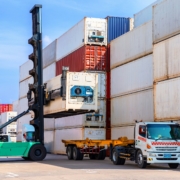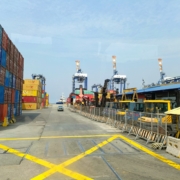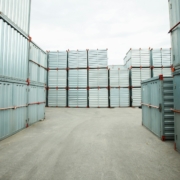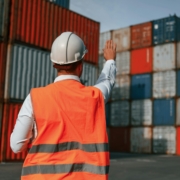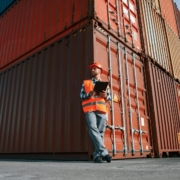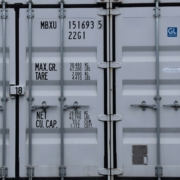One Call Handles Everything: The Importer’s Playbook From Wharf to Door
Importing containers through the Port of Brisbane should feel like a simple, well-organised process, not a guessing game waiting to catch you off guard. Delays creep in when too many different people and companies are mixed up with too many moving parts. Maybe one business handles biosecurity, another sends a truck, and a different crew sorts out the warehouse. If something goes sideways, it’s all too easy for everyone to pass the blame.
When one team manages the complete job, right from picking up the container through to fumigation, then onwards into warehousing in Brisbane and final delivery, life gets easier. You get fewer surprises and headaches along the way. It’s much simpler to keep timelines tight when nothing is handed off or lost in translation between different sides. Here’s what that kind of full job control looks like, and why it matters most when you’re under pressure. Less stress. More control. One call handles everything.
Start at the wharf: container pickup and slot timing
Most of the time, delays start at the port. If your container misses its pickup slot, it could sit there for days. This causes all sorts of problems, like missing dehire windows, upending inventory plans, and knocking deliveries off course. All it takes is one slip.
Slot visibility should be right at the top of your list. Ask your provider if they can see and track live slot times at the Port of Brisbane. Do they know as soon as your container is discharged and ready to move? If they do, they can avoid starting your day with that dreaded update, “It didn’t come off,” or, even worse, “We missed the slot.”
Location changes the whole story. If your transport partner has a depot close by to the port, getting in and out is much faster. No crawling through city traffic or long hauls just to pick up your load. Being nearby means less congestion risk and fewer wasted hours between moves, especially during peak periods at the wharf.
An owned fleet sets everything apart. If your provider owns their own trucks, there’s no waiting for third parties to show up. No phone tag or crossing your fingers that someone you’ve never met will stick to the plan. You know who’s handling your container from start to finish, and they can pivot quickly when ship schedules are shuffled or containers pop out early or late.
DNV Transport, as shown on their site, operates an owned fleet which gives more control over vehicle despatch, maintenance, and scheduling. This helps prevent downtime when things get busy or plans change fast at the port.
Biosecurity isn’t luck, it’s process
Turning up at the quarantine yard “hoping for the best” is no plan at all. Delayed or wrong fumigation booking, or unclear clearance paths, can park containers for weeks. And one miss with biosecurity can cause damage that hangs over supplier relationships for a long time.
You need to know your clearance path before any wheels turn. QAP 1.1 and 11.2 mean different things for each shipment. QAP 1.1 allows for more freedom once cargo leaves the port precinct, but QAP 11.2 demands that the container stays fully sealed for an official inspection. If your provider doesn’t understand this, you’re already in trouble.
Tailgate inspections and fumigation should be planned, not a last-minute mad dash. Having on-site fumigation at the port speeds things up, avoiding extra moves. During hitchhiker pest season, when the risk and hold-ups jump, working with a partner using plain English checklists and giving timely alerts is key.
Position inside the port precinct counts. A team working from inside the port precinct can move your container straight into biosecurity handling after discharge, no extra trucks or off-site runs. This is one reason DNV Transport’s QAP-accredited facility inside the Port of Brisbane helps keep freight moving, not just waiting on a “please follow up” list.
Storage without stress: clean workflows into warehousing in Brisbane
Once biosecurity is sorted, the next risk is missing dehire deadlines. Letting containers sit too long means detention costs pile up and the pressure lands on you. Fast unloading straight into warehousing in Brisbane closes this risk gap.
But getting goods off the truck is only half the job. If your warehouse doesn’t keep track of every inbound move, or if stock isn’t marked as received quickly and clearly, another set of delays starts to build. Having a live update system during unloading and clear, visible labelling keeps everyone in the loop and means no one chases missing paperwork later.
Here is how mishandled workflows can cause trouble:
– Missed inbound scan means the customer waits longer for their items
– Delays in adding stock to inventory trigger extra support calls
– Poor tracking can cause failed SLAs and even chargebacks from angry clients
Warehousing in Brisbane that is run with solid standard operating procedures avoids these headaches by making sure:
– Inbound stock is logged and tracked as soon as it enters
– Put-away is fast, keeping inventory ready for the next job
– Outbound moves are prepared with accurate, clear counts
DNV Transport’s warehousing in Brisbane includes secure storage monitored 24/7 with reliable racking systems to help keep stock safe and transitions smooth.
Last-mile matters: gear, drivers, and access
It’s easy to overlook the last step until the delivery truck is actually at the site, but this is where many jobs run into delays. If your location needs special gear or difficult access, and your provider doesn’t have the right trailer or enough knowledge about your site, the whole job can fall apart right at the end.
Different trailers are built for different site needs. Side loaders can grab and set down containers with no dock or forklift. Skel trailers are better for wide, flat yards, letting you back up straight to the spot. Reach trailers move large or odd-sized cargo that can’t fit standard containers. When your equipment matches the site you get a quick, safe drop, if not, you end up wasting time and risking damaged freight.
This is where driver experience and a direct line of communication matter most. Not running everything through layers of third parties means you get quick answers if something on site changes at the last moment. If the driver has been to your site before, has a clear picture of access points and what needs to happen, chances of an on-time, no-drama delivery are much higher.
Organising the right trailer is simple with a company that owns specialist gear and keeps it maintained to a high standard.
One call, full control: what a true partner looks like
No one wants to spend their day sorting out who was supposed to do what, or trying to track down who booked fumigation or missed a slot. When the job is split between too many people, responsibility gets lost and the blame game starts.
A partner who controls the whole process gives you a single name to call if something comes up. Reliable providers do not disappear after pickup, nor do they dodge the phone when there’s a biosecurity hold. You get direct answers from people who work for the same business that manages your freight at every point.
Behind the scenes, reliable tracking and communication systems matter too. Live updates help you know where everything is, while clear, accurate invoices mean you are never left guessing about costs or chasing up paperwork. For anyone responsible for hitting deadlines and keeping clients informed, these tools aren’t just handy, they’re the foundation of trust.
When there are no hand-offs, and your provider owns the jobs from wharf to door, the process is steady and predictable all the way. You don’t get stuck chasing multiple companies or hoping that an outside dispatcher will return your call.
No missed steps, no missed windows
Getting container freight right from wharf to door in Brisbane isn’t about stacking boxes or crossing your fingers. It comes from fitting key parts together, process, people, equipment, and location, to cover every risk. When your logistics partner is minutes from the Port of Brisbane, owns all their trucks, understands every biosecurity clearance type, and offers warehousing in Brisbane ready to store or unload, you are covered.
Greg has no margin for error. One late clearance or a botched delivery puts more than a week in danger. That is why a fully connected process, set up to catch every link in advance, is what makes the difference. With one team holding every part of the job, communication is straight, updates are live, and the chance of missing a window drops fast.
A single call should handle everything. No more chasing numbers or making late-night calls when something slips. When the whole job is in one set of hands, you can finally trust things to flow all the way from dock to doorstep, without extra stress on your shoulders.
Done with missed handoffs and last-minute scrambles? We’ve built our process to keep containers moving from dock to doorstep. Our location near the Port of Brisbane means we can unload straight into secure, well-run storage without delays. Whether it’s fumigation, unpacking or final delivery, your containers move in and out of the system with less stress. Lock in your spot for dependable warehousing in Brisbane. Talk to DNV Transport and get backed by one team from start to finish.

